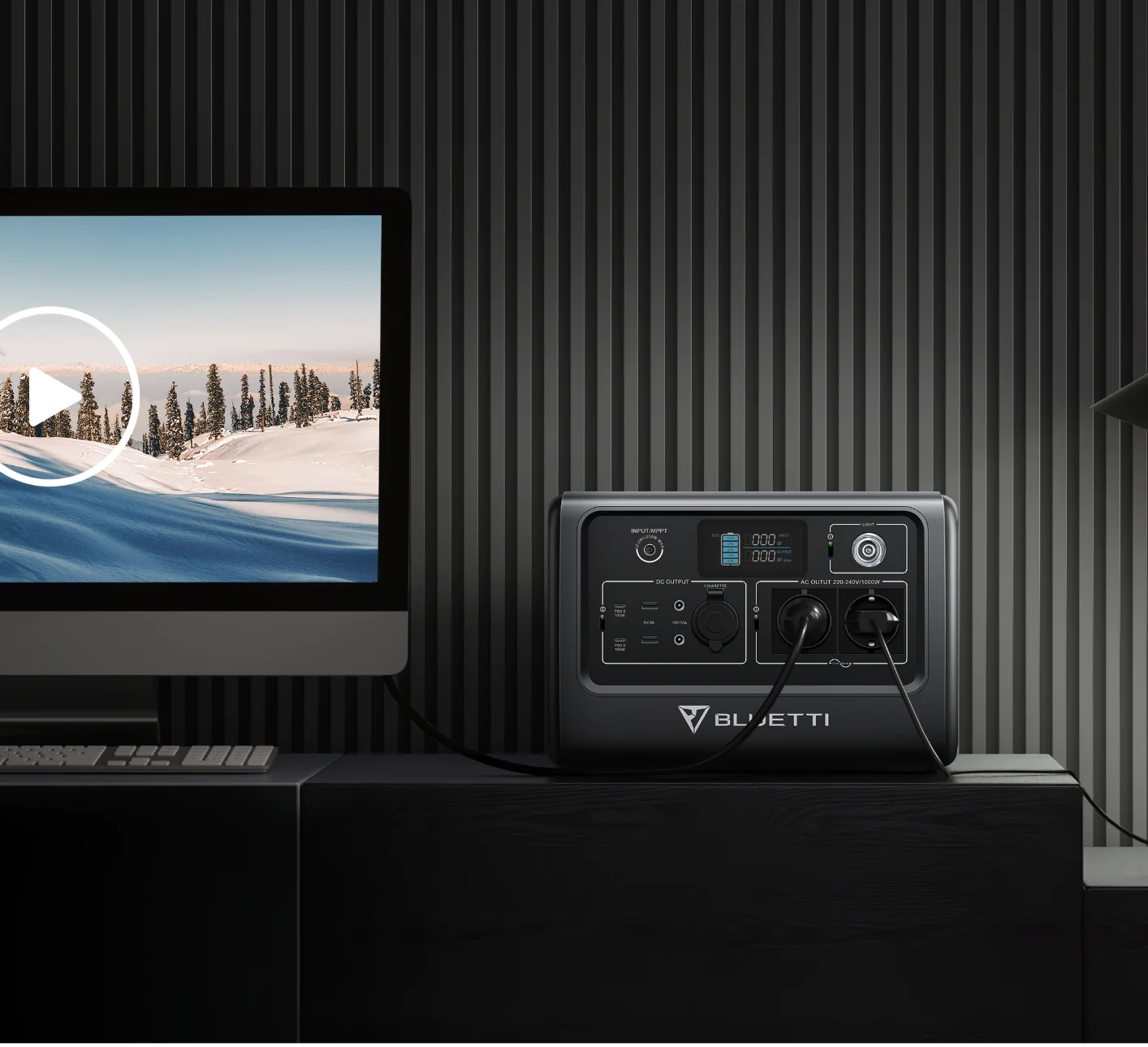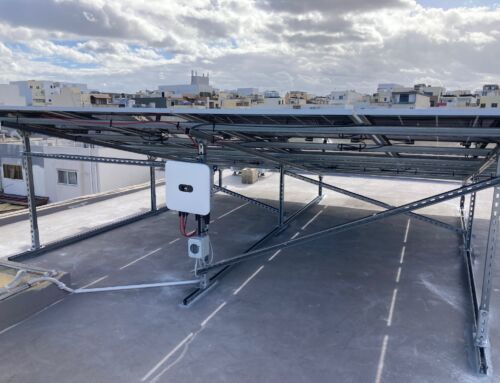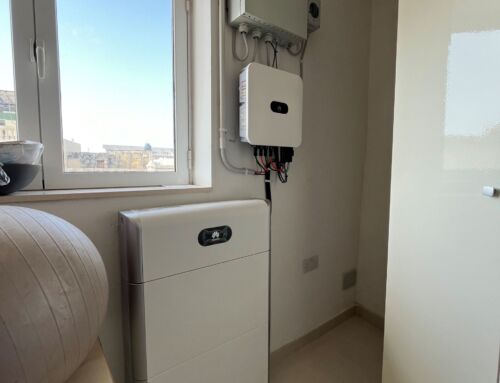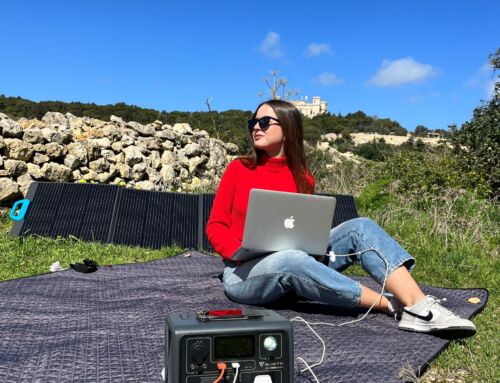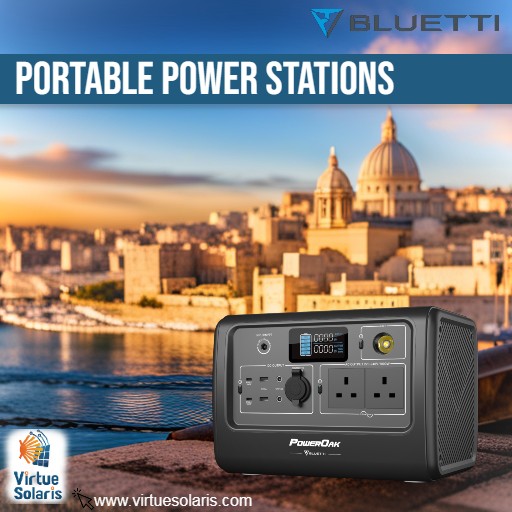
What are portable solar power stations?
Portable power stations, or portable solar generators, are devices designed to store electricity in Lithium Ion Polymer Phosphate (LiFeP04) batteries and to provide electrical power to a wide range of appliances whenever and wherever needed. The energy used to charge portable solar generators can come from a variety of sources: from solar panels that convert light to electricity, to home power sockets, vehicles, conventional generators or even from other batteries.
Portable solar power stations combine very powerful, safe and durable LiFeP04 battery, pure sine wave inverter, MPPT charge controller and intelligent management system, all in one device. As a result, portable solar generators can provide reliable power source for many applications: from emergency power supply in case of power cuts, to off-the-grid energy use on board of boats, campers, street food kiosks and pretty much any use one can imagine.
Why consider a portable solar power station?
Our increasingly digital and energy-dependent lifestyles demand staying connected and powered up. Yet in many situations, one cannot depend on power grid alone. Portable solar generators extend the convenience of grid-quality power supply to off-the grid situation, even whilst on the
Compact, versatile, and with an array of innovative features, these devices have become a must-have for every adventurer, camper, and tech-savvy individual, or for anyone concerned with reliability and dependence on the grid.
Important things to think about when buying a portable solar power station
First, one should assess and define the main objective for using a portable solar power station according to one’s needs. Do I need portable power supply for my camping gear? Do I need backup power for my home appliances in case of power cuts? Do I need to power up equipment on board a boat or camper van? What type of equipment do I want to power up, and for how long? Are you looking to charge small devices like smartphones and tablets, or do you need a powerhouse to run larger appliances?
Once objectives are clear, the most important factors to consider are:
Power capacity of the battery: Measured in watt-hours (Wh) this defines the amount of energy that the power station can store. For example, Bluetti EB55 model has 537Wh battery. Therefore, if I need to power up a fan that consumes around 50 watts per hour, EB55 would have enough charge to keep the fan running for around 10 hours.
Charging options: all Bluetti solar power stations are capable of being charged either from the grid, or from solar panels. Many Bluetti models also offer additional charging options such as charging from a vehicle through cigarette lighter 12V socket, or from a lead acid battery, or from conventional generator. When it comes to charging versatility, important factors to consider when choosing the right Bluetti model are: charging power rate when charging from the grid and charging voltage & current limits when charging from direct current sources such as solar panel.
For example, Bluetti AC200MAX power station comes with a 500W charger that allows fast charging from a normal home socket. This power station has 2,048Wh battery, and therefore full charging from the grid can take around 4 hours. However the same model can also be charged from up to 900W of solar panels, with open circuit voltage ranging from 10Vdc to 145Vdc and maximum charging current of 15A.
Therefore if you have two solar panels of 450W each connected in series, and each solar panel has open circuit voltage of say 50Vdc, and provided that solar panels are perfectly oriented and exposed to strong sunlight, you can recharge AC200 max in less than 3hrs using solar power alone.
However models like AC200 Max are also capable of dual charging mode, that is charging from the grid and from solar power simultaneously!
Moreover, you can use your Bluetti to power up your appliances whilst at the same time recharging the power station! For example, if your AC200 MAX is connected to solar panels which provide an average of say 1,000Wh of solar energy during daylight hourse, and you’re simultaneously using this power to run a fridge (or any other appliance) that consumes the same amount of energy in 24 hour period; essentially you have an endless and renewable source of power for your appliance which is being replenished each and every day!
Besides battery capacity and charging power, specifications of inbuilt inverter are extremely important. If you need to use domestic appliances that run on 230V AC (alternating current) power, your power station must have an inverter of the right size to convert direct current (DC) from the battery to alternating current (AC). There are two important parameters when it comes to inverter: maximum steady power output, and maximum peak surge capability.
Maximum steady power output is the amount of power that the inverter can draw from the battery and convert to alternating current at any one time. For example, if you intent to use appliances that consume up to 1kW (1,000 Watts) of power, you would need power station with inverter capable of at least 1kW steady output. If you plug in a higher load than specified inverter power, the power station would not work. Likewise, if you’re connecting multiple loads that cumulatively exceed inverter rated power, the power station will shut down as a precaution, and will need to be restarted once total load is reduced.
Apart from steady output, another important inverter parameter is peak surge power. Different types of appliances use electricity differently.
For example inductive loads like compressors in fridges or airconditioners, or water pumps, can draw higher current (Amps) to kick start, and then level up their power draw to rated input. Sometimes the current needing to start an electric motor say in a water pump can be up to 5 times greater than rated power of the appliance. For example a 200Watt rated water pump can take up to 1,000W and even more for a second or so just to start operating. Therefore you should choose Bluetti generator model with peak power surge rating appropriate for your appliances. For example Bluetti AC300 model can supply up to 3kW steady power output, but is also capable of powering up to 6kW load in a brief surge. Models such as EB3A, EB55, AC200 MAX, AC300 and AC500 are capable of peak surge output which is twice as high as rated output.
Another important factor when selecting the right Bluetti model for you is size, weight and portability. Do you always need your Bluetti on the go? Is it something that needs to be carried frequently by hand, or would it need to remain in a fixed place in a vehicle, building or boat? Bluetti has a great range of models, from the most compact, like EB3A, EB55 or EB70, to larger but still portable models like AC200 MAX, or even larger and slightly less portable power beasts like AC300 and AC500!
Besides technical factors that you need to consider when selecting the right Bluetti model, certainly one would also consider the overall value of owning a solar power station. Are portable power stations worth it?
The answer to this question is definitely a yes!
This is because the utility of a solar power station extends well beyond the convenience of having reliable power supply on the move. A solar power station can sometimes be the only available or feasible source of power when a power cut strikes your home or office; or the only way of providing energy in an off-grid location, or the cheaper and more sustainable alternative to conventional combustion engine generator.
Portable solar power stations aren’t just for outdoor enthusiasts. They prove their worth indoors as well, especially during power outages. Prepare in advance by charging the station, and when the lights go out unexpectedly, you won’t be left in the dark. Cook your meals, play games, or stay updated on social media – all possible with the stored electricity in your trusty portable power station.
The versatility and reliability of these power-packed companions make them a smart investment for anyone seeking to stay powered up both in the great outdoors and during unforeseen emergencies. So, whether you’re an avid camper or just want to stay prepared for power outages, a portable power station is undoubtedly a valuable addition to your tech arsenal.
Activity tags

